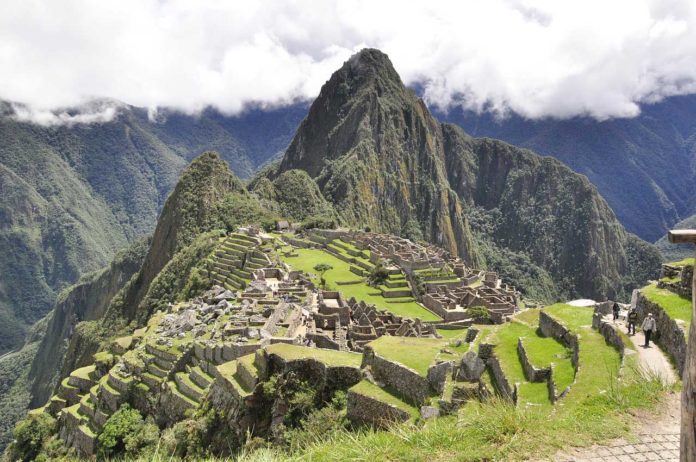Often mistakenly referred to as the “Lost City of the Incas,” Machu Pikchu is the most familiar Inca civilization icon. The sanctuary of Machu Picchu is considered one of humanity’s most significant architectural achievements.
On July 7, 2007, Machu Picchu was chosen as one of the New 7 Wonders of the Modern World. Built-in a remote Andean setting atop a narrow ridge high above a precipitous river canyon, the site is eminent for its ideal combination with the spectacular landscape.
However, the 15th-century sanctuary’s location has long puzzled scientists who wonder why the Incas built their masterpiece in such an inaccessible place. A new study seems to solve this mystery. The study conducted by the scientists from the Geological Society of America suggests that the sanctuary was intentionally built in a location where tectonic faults meet.
On Monday, at the GSA Annual Meeting in Phoenix, Rualdo Menegat, a geologist at the Brazil’s Federal University of Rio Grande do Sul, presented the results of a detailed geoarchaeological analysis. The analysis suggests that the Incas intentionally built Machu Picchu and some of their cities — in locations where tectonic faults meet.
He used a combination of satellite imagery and field measurements to map a dense web of intersecting fractures and faults beneath the UNESCO World Heritage Site. His analysis demonstrates these highlights generally differ in scale, from tiny fractures visible in individual stones to major, 175-kilometer-long lineaments that control the orientation of a portion of the region’s river valleys.
These faults and fractures occur in several sets, some of which correspond to the major fault zones responsible for elevating the Central Andes Mountains during the previous 8,000,000 years. Because some of these faults are oriented northeast-southwest and others trend northwest-southeast, they collectively create an “X” shape where they intersect beneath Machu Picchu.
Menegat said, “Machu Picchu’s location is not a coincidence. It would be impossible to build such a site in the high mountains if the substrate was not fractured.”
“The mapping suggests that the sanctuary’s urban sectors and the surrounding agricultural fields, as well as individual buildings and stairs, are all oriented along with the trends of these major faults. The layout reflects the fractured matrix underlying the site. Other ancient Incan cities, including Ollantaytambo, Pisac, and Cusco, are also located at the intersection of faults. Each is precisely the expression of the main directions of the site’s geological faults.”
The results indicate that the underlying fault-and-fracture network is integral to Machu Picchu’s construction as its traditional stonework. This mortar-free masonry features stones so perfectly fitted together that it’s impossible to slide a credit card between them. As master stoneworkers, the Incas took advantage of the abundant building materials in the fault zone.
Menegat said, “The intense fracturing there predisposed the rocks to break along these same planes of weakness, which greatly reduced the energy needed to carve them.”
“In addition to helping individual shape stones, the fault network at Machu Picchu likely offered the Incas other advantages. Chief among these was a ready source of water. The area’s tectonic faults channeled meltwater and rainwater straight to the site. Construction of the sanctuary in such a high perch also had the benefit of isolating the site from avalanches and landslides, all-too-common hazards in this alpine environment.”
“The faults and fractures underlying Machu Picchu also helped drain the site during the intense rainstorms prevalent in the region. About two-thirds of the effort to build the sanctuary involved constructing subsurface drainages. The pre-existing fractures aided this process and helped account for its remarkable preservation. Machu Picchu clearly shows us that the Incan civilization was an empire of fractured rocks.”
